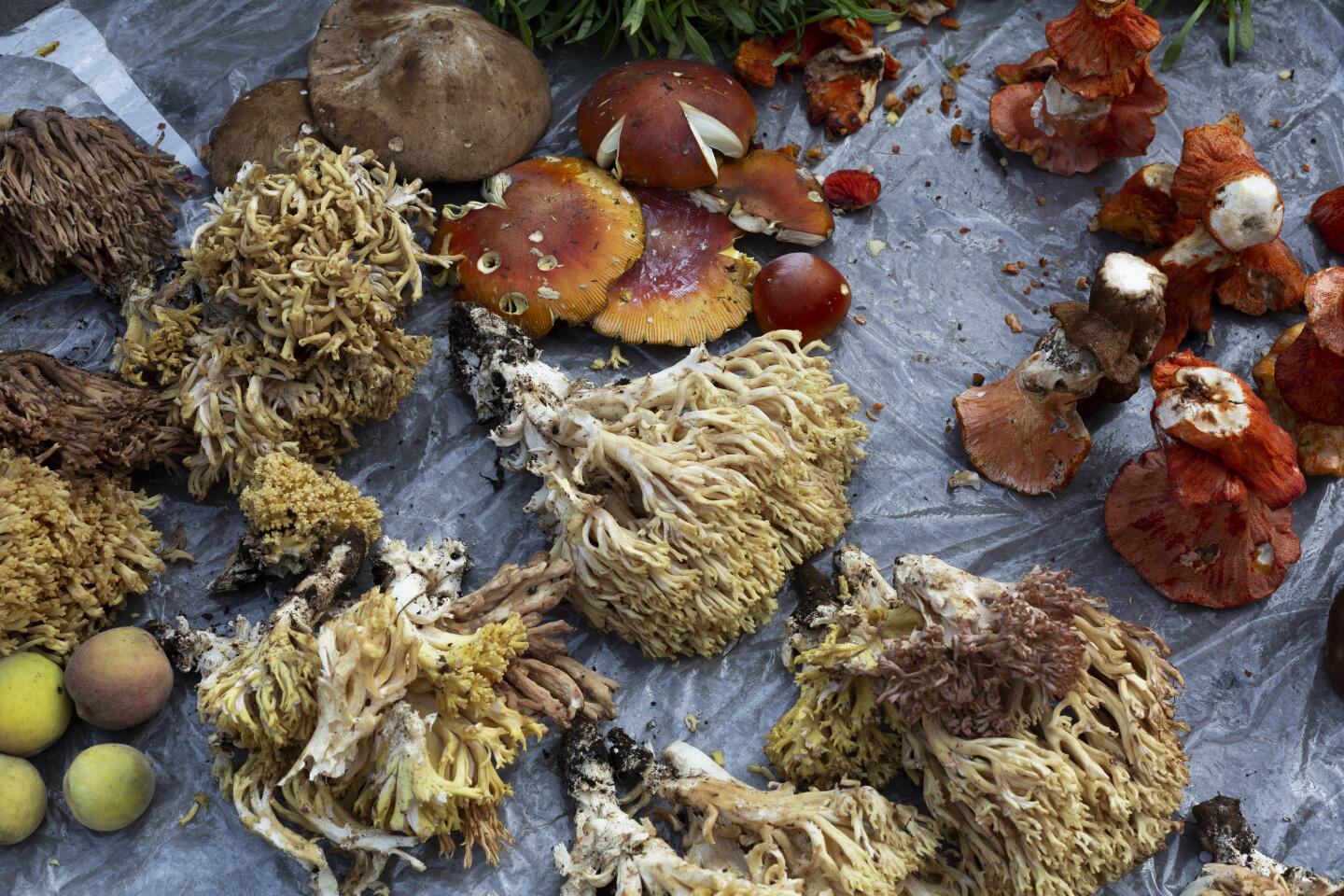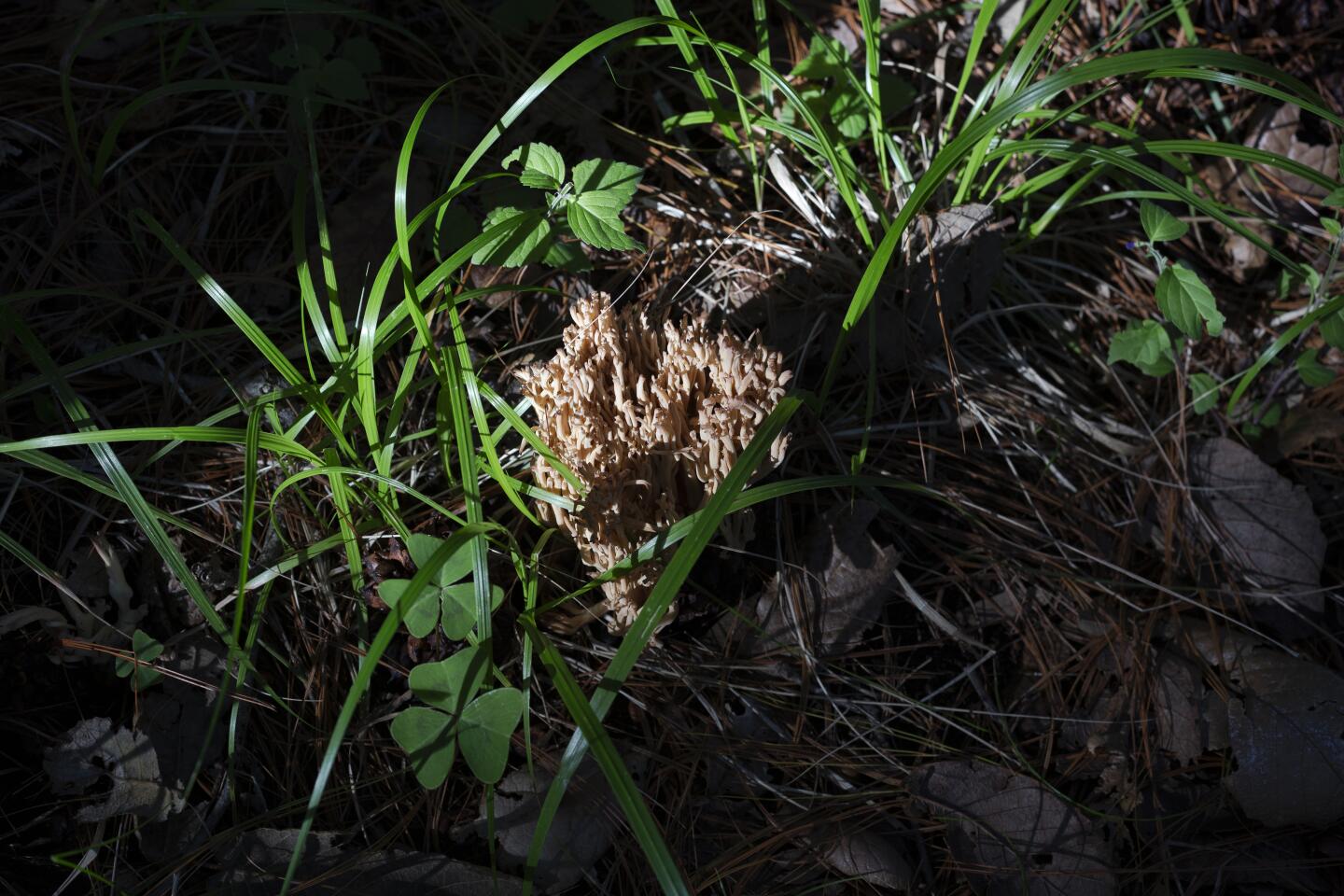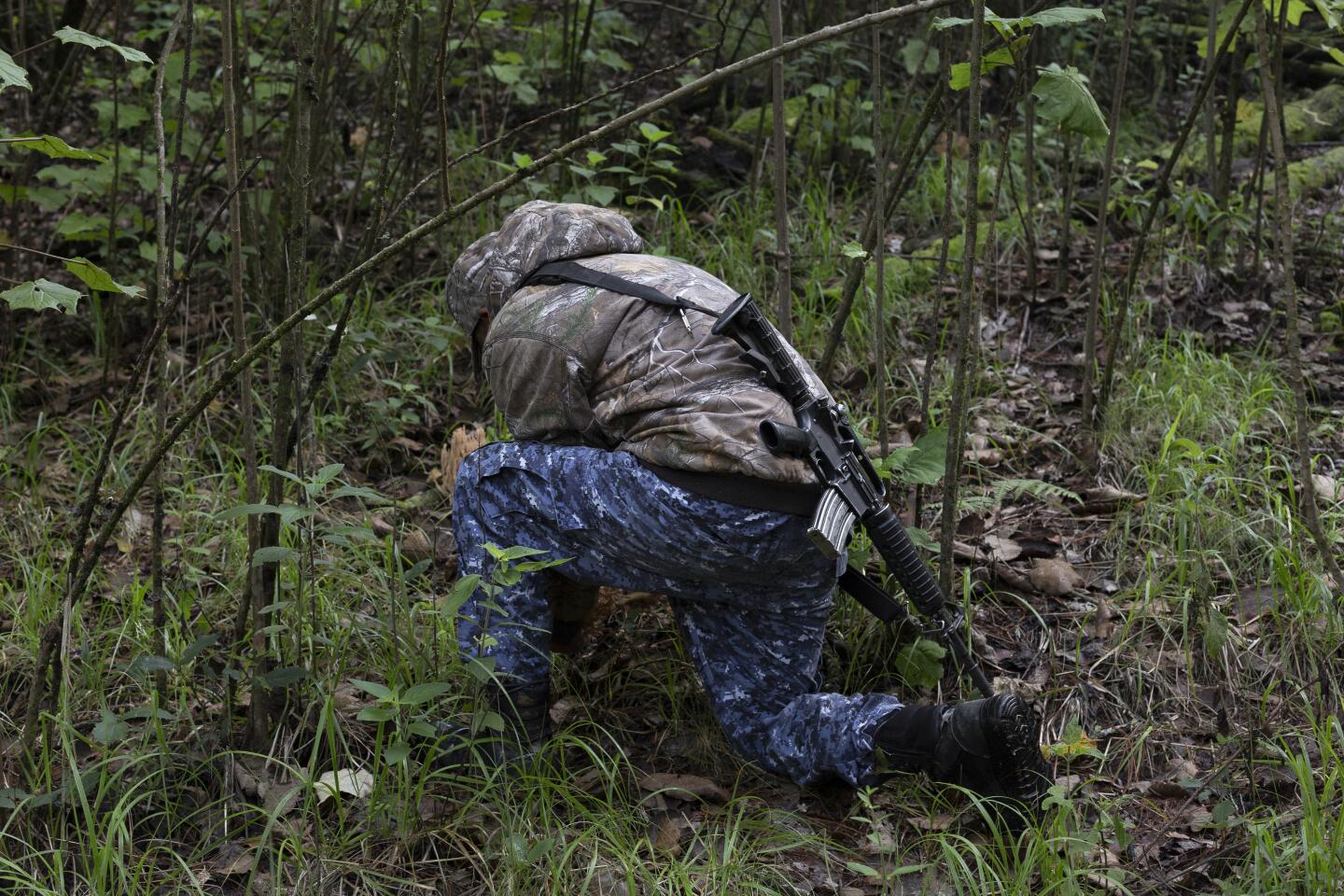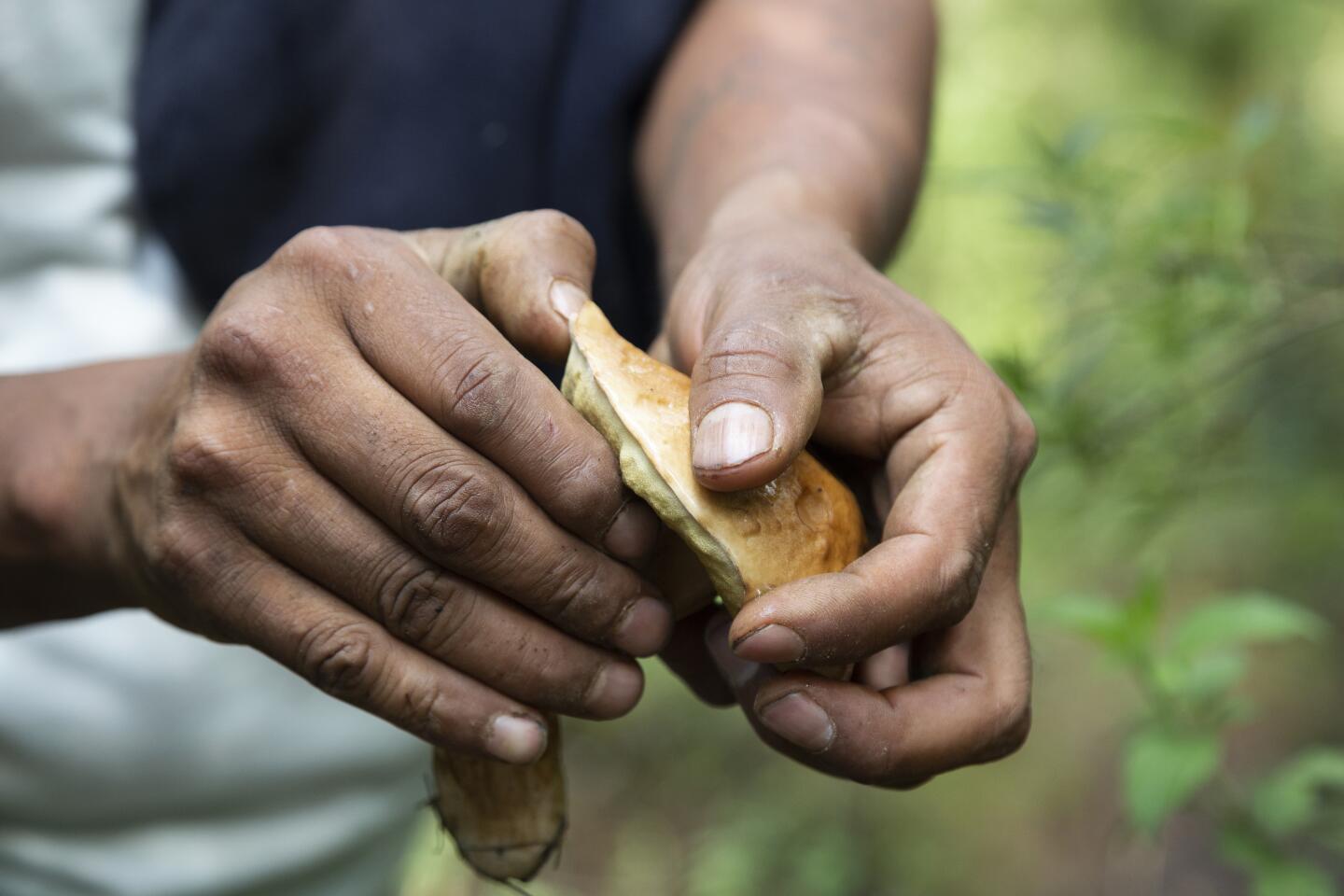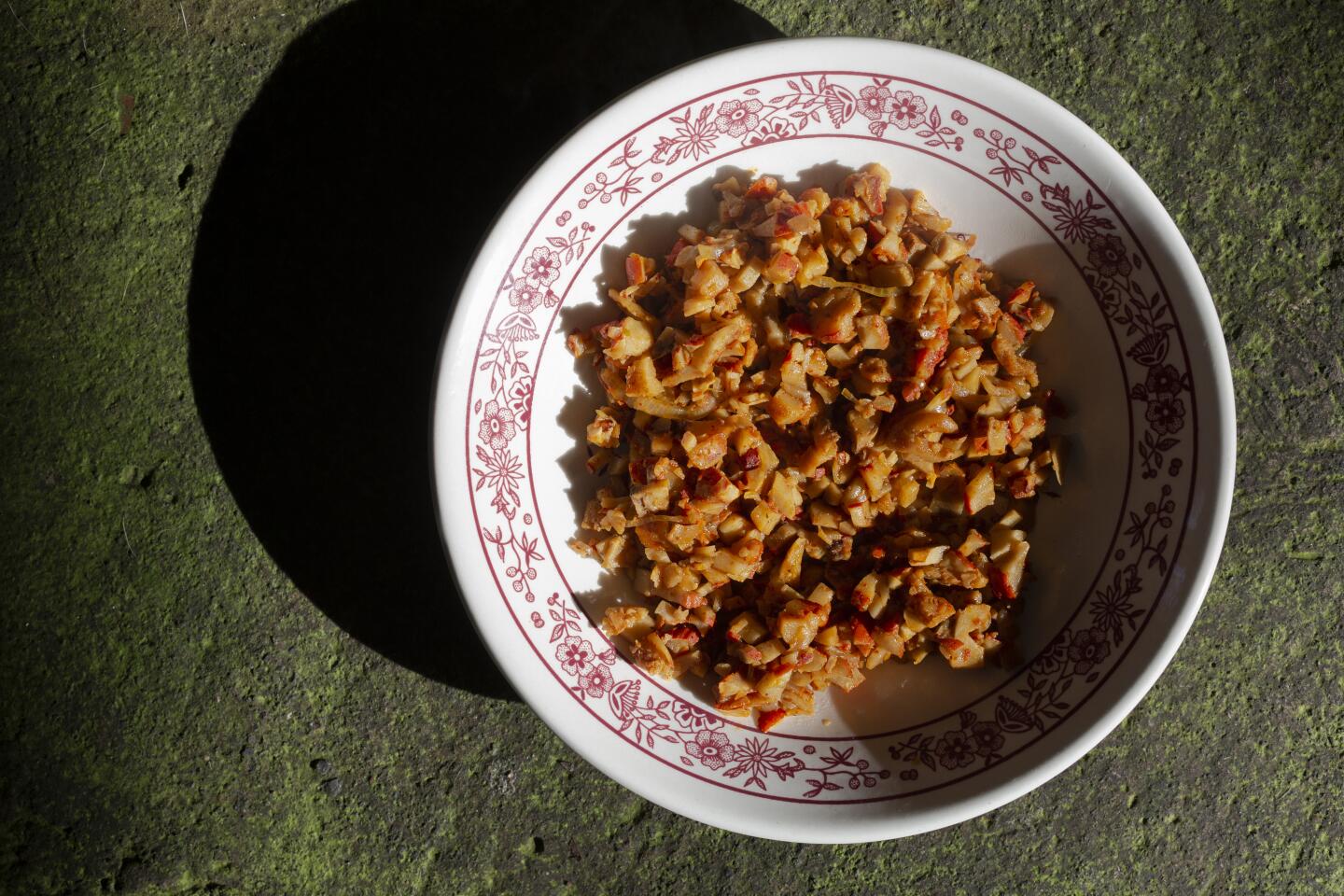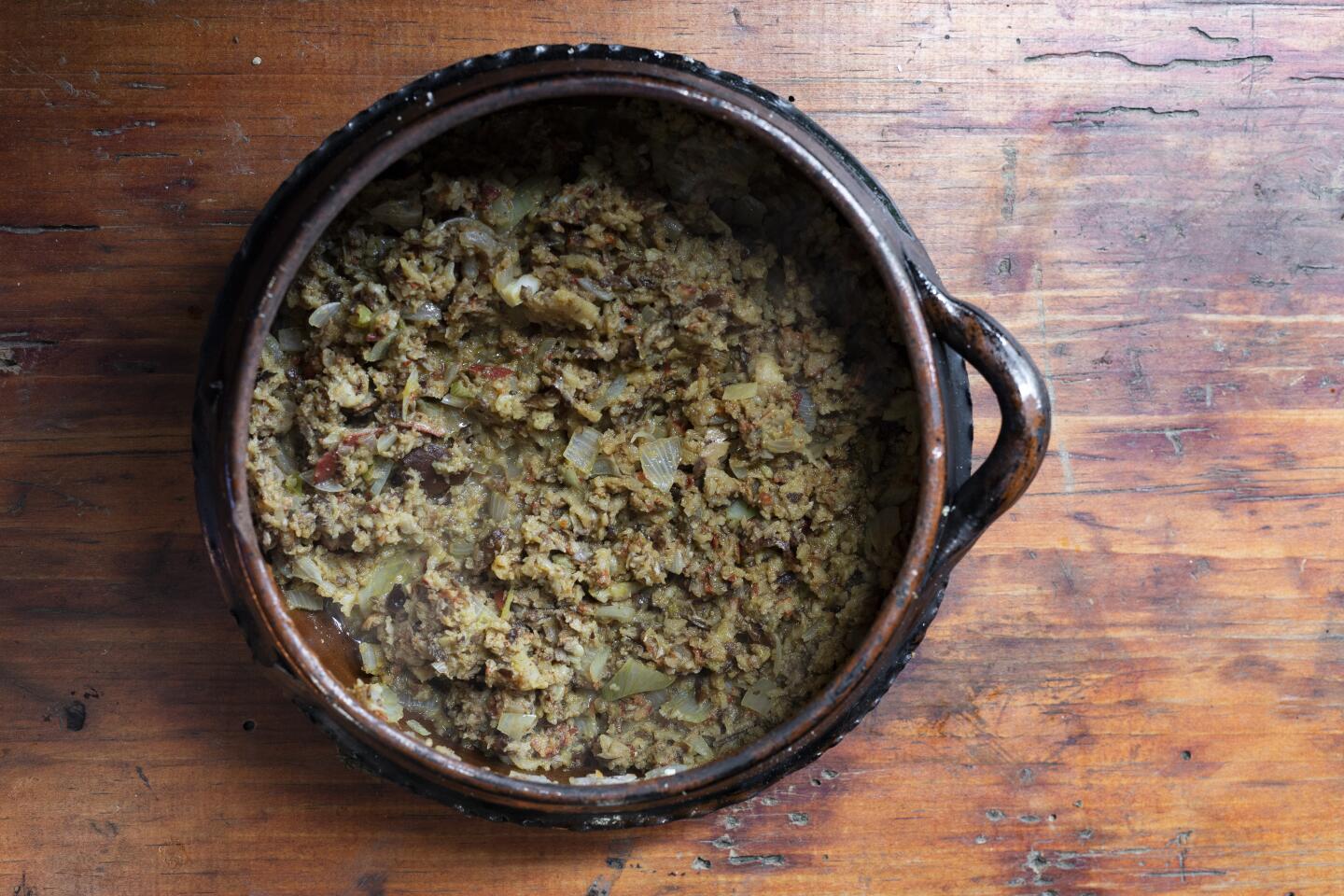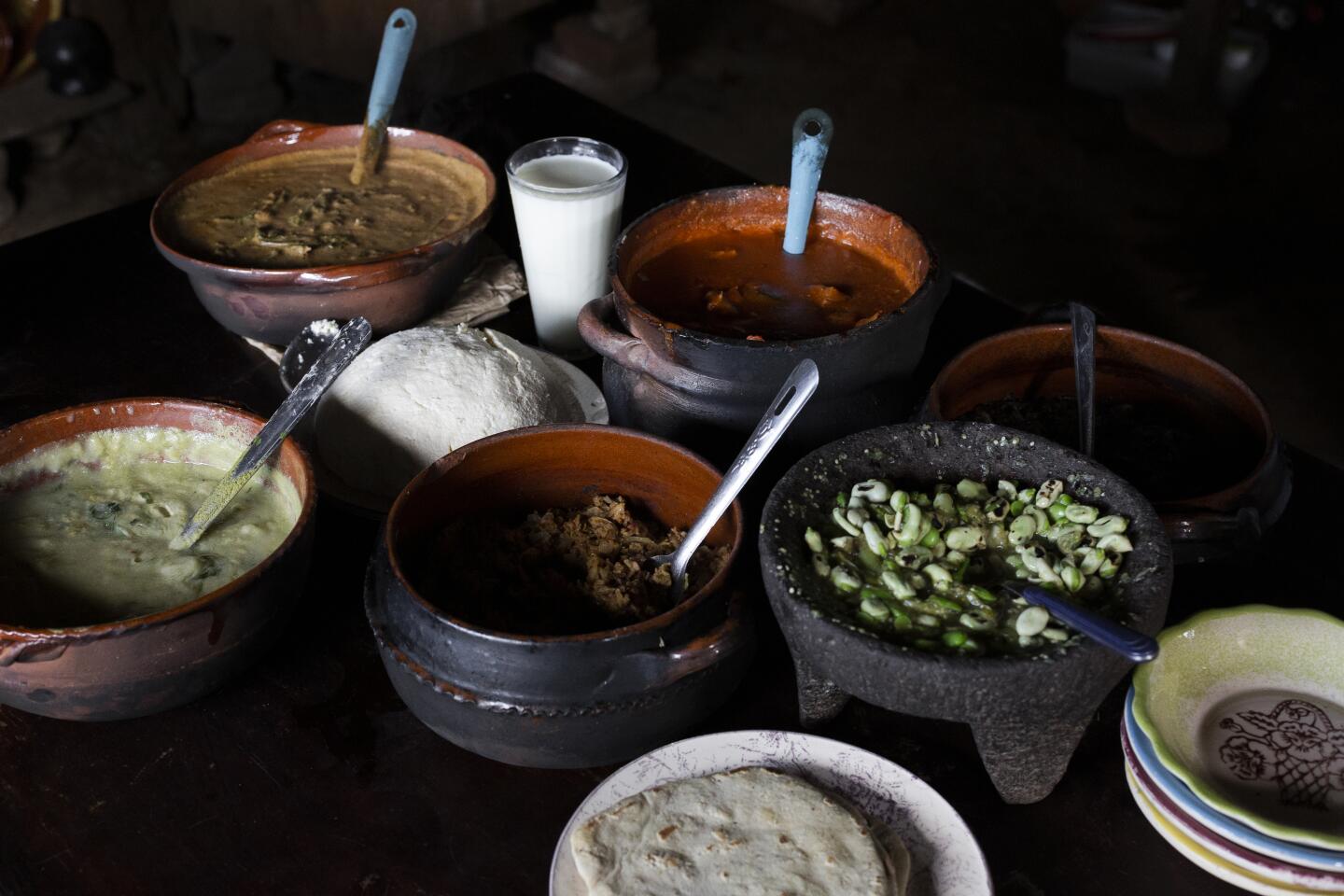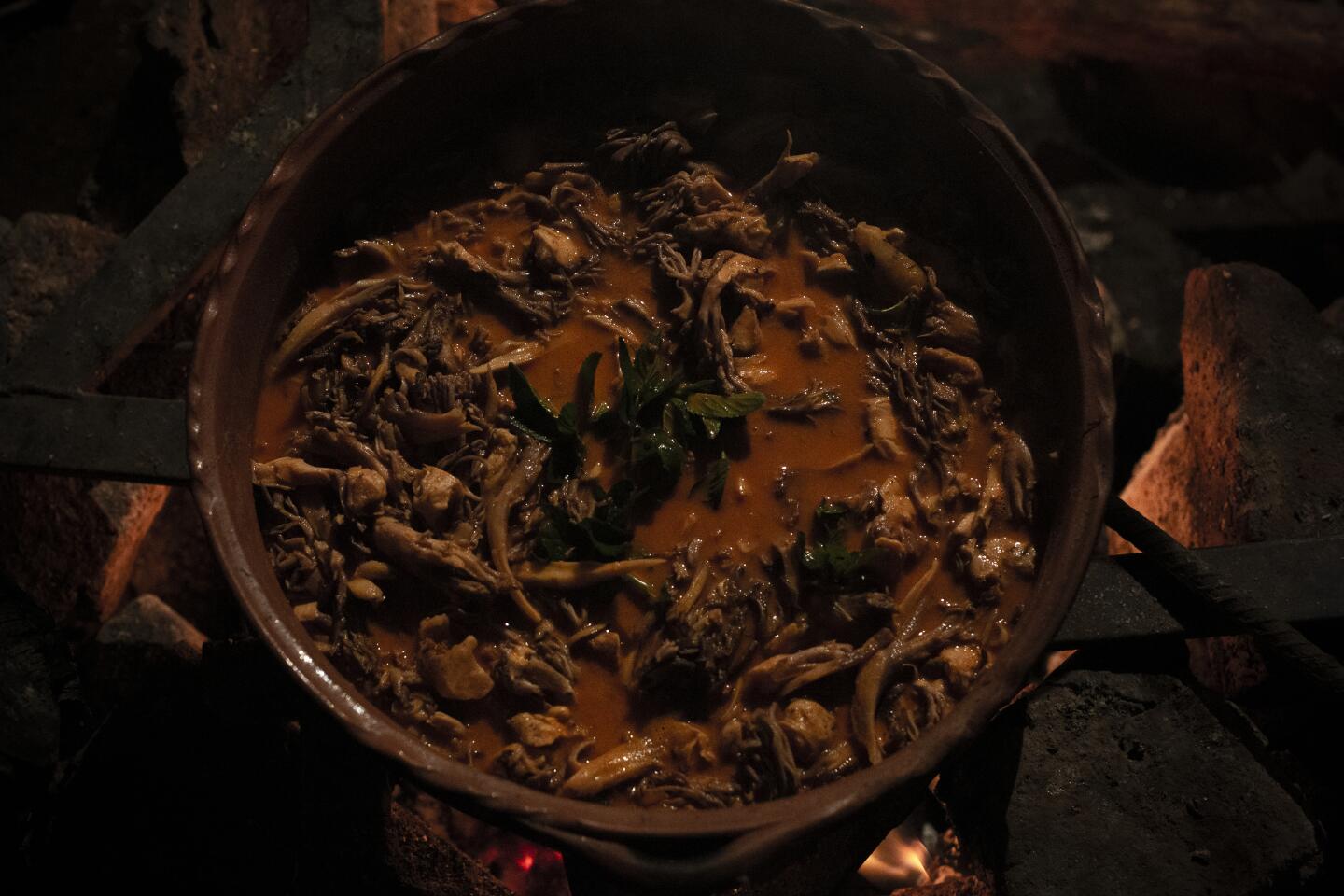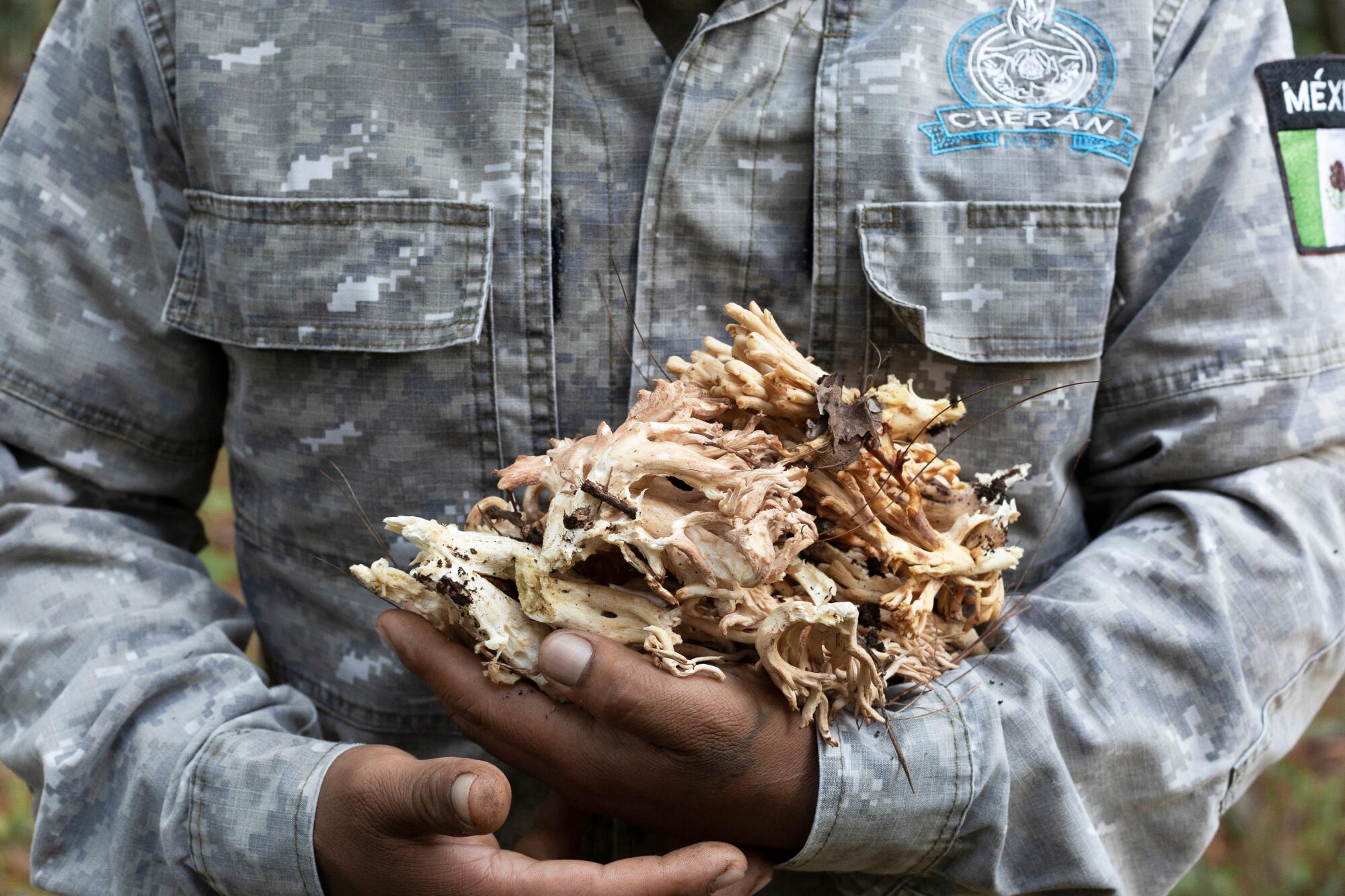
- Share via
Every morning from June through October, Héctor Campanur Sánchez leaves his home in Cherán, in the central Mexican state of Michoacán, to hunt for wild mushrooms on the steep slope of an extinct volcano.
For the duration of the rainy season, those mushrooms dominate the indigenous Purhépecha town’s Saturday and Tuesday markets, laid out in geometric piles among fistfuls of wild greens and opaline stalks of blue and pink corn.
First come the yuntas, or yokes, which grow in pairs like hitched oxen, and the ghostly white lobes of ahuachikuas, the perfect filling for corn-husk-wrapped nacatamales. Later come pale gray ox stomachs, grilled on clay comals like slabs of beef; yellow tiripitis as rich and unctuous as egg yolks; coral-like birds feet to sweat into blood-red stews called atapakuas, thickened with masa and scented with yerba buena; and bright orange trumpet mushrooms, known here as pig snouts, which, ground to a mince and fried with garlic, onion and lard, bear an uncanny resemblance to a good pastor.
“In mushroom season,” Campanur, 32, says, “you can suffer a little less.”
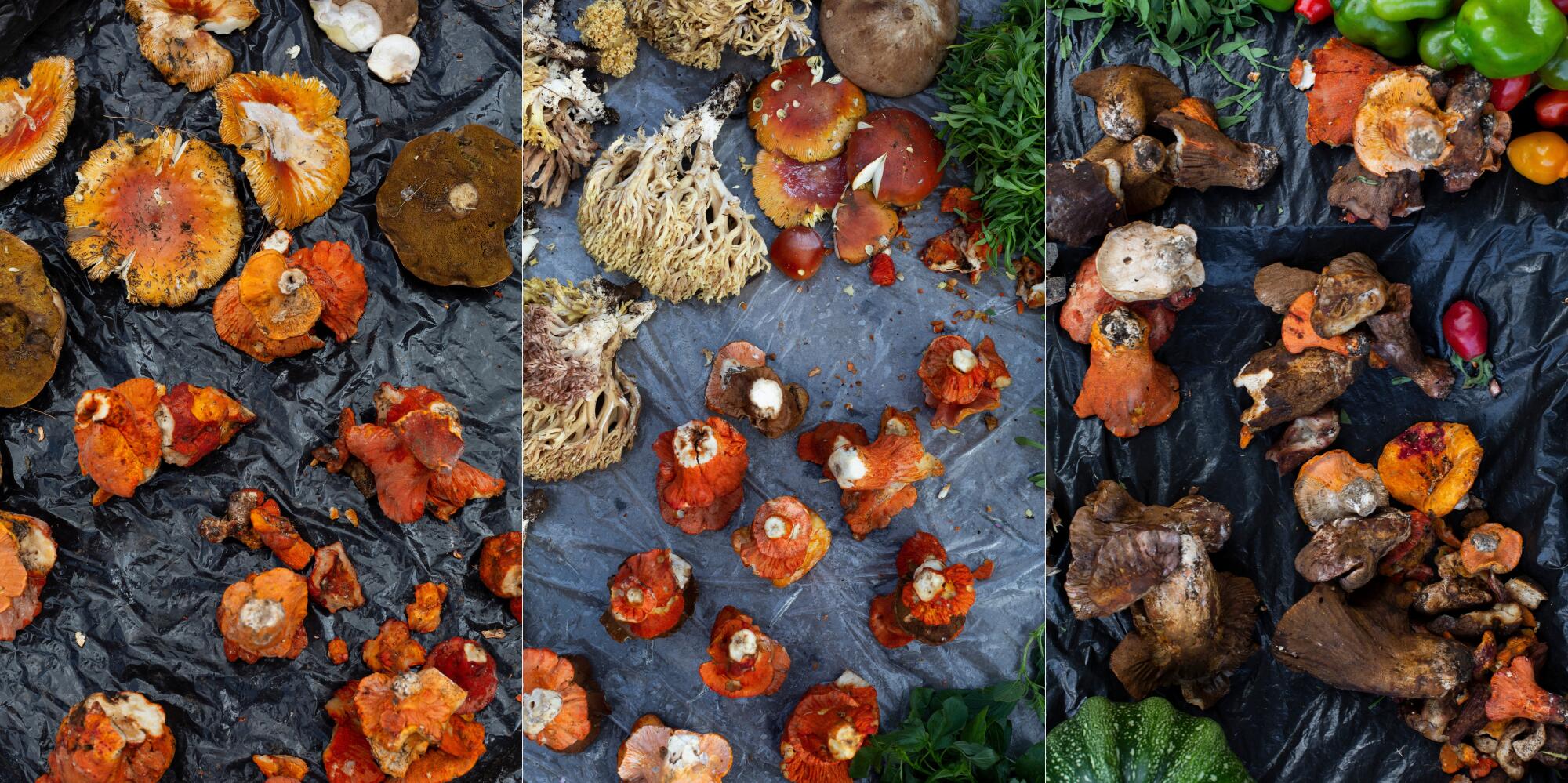
Campanur’s family has collected and sold mushrooms for generations, yet as recently as a decade ago, the tradition was at risk of disappearing. Illegal logging began around the edges of Cherán’s expansive municipal territory, which covers nearly 52,000 acres, in the early 2000s. In 2008, loggers from a neighboring village formed an alliance with a local cell of the Knights Templar Cartel, which was eager to clear the land for lucrative avocado farms.
Over the next four years, the loggers poured like termites over the volcanoes, sometimes clearing more than 124 acres in a week. Trucks loaded with wood rattled through town as many as 250 times each day, according to Miguel Macías Sánchez, current president of the Council for Community Property, escorted by armed guards who aimed their AK-47s at anyone who questioned them.
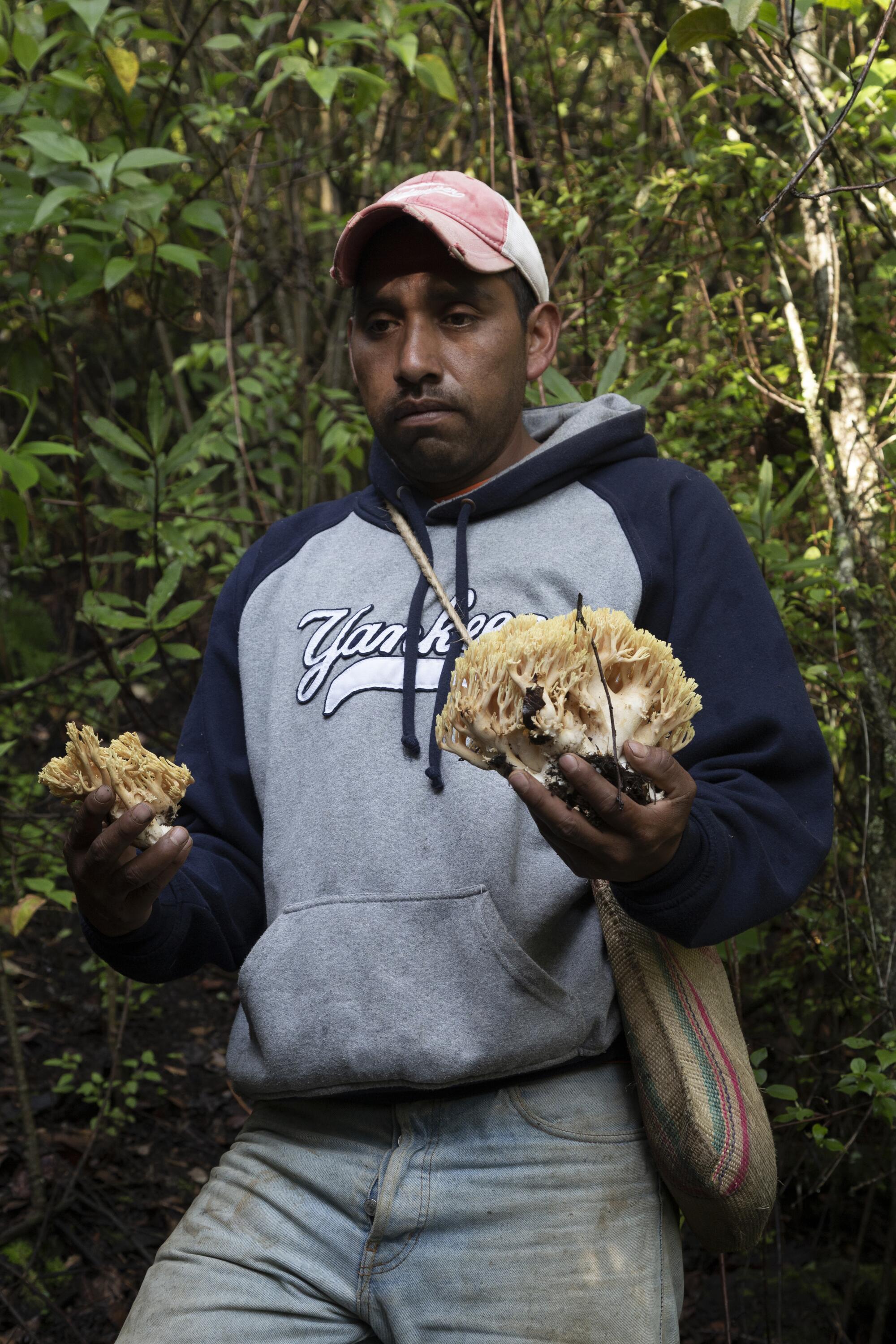
According to a study from the Universidad Michoacana, some 19,800 acres of woodlands were cleared by 2011, about 70% of Cherán’s total forested territory. Some in town call that number modest, saying the destruction came closer to 30,000 acres or more. Murders, disappearances, extortion and kidnapping became commonplace. Mushrooms couldn’t grow without the detritus of falling leaves, and families such as the Campanurs stopped going to collect them for fear they might not come back.
Then, on April 15, 2011, the people of Cherán rose up. Led by 15 women armed with sticks, rocks and firecrackers, they drove the loggers out, sealed five hostages in a stone chapel using only their worn cotton shawls and barricaded the entrances to town with burnt-out trucks. When the police and the municipal president — whose 2008 election, many surmise, was bought by the cartels — came with more armed men to release the hostages, the women drove them out too, along with the old political order.
Nine years later, Cherán and its democratically elected 12-person council have set an example of good governance in a state beset with mismanagement and violence. Though still recipients of federal funding, Cherán has barred entry to all politicians, political parties and state police, operating instead under a system known as Uses and Customs, which allows indigenous peoples to administer themselves by their own rules.
According to the Council for Communal Property, Cherán has replanted nearly 80% of the land devastated by the loggers, known to most as the rapamontes, or forest rapers. And the mushrooms, Campanur says, have come back, part of a powerful vindication of the town’s indigenous identity.
::
Though the uprising only lasted a few hours, the 189 bonfires, or fogatas, lit that day burned on every corner in town for nine straight months.
At first, the fogatas functioned as a security measure, allowing people to pass messages quickly across the village at night. But it didn’t take long for the fires, which doubled as public kitchens, to become the basic unit of Cherán’s emergent political order: a hearth, rather than a crucible, to forge a new society.
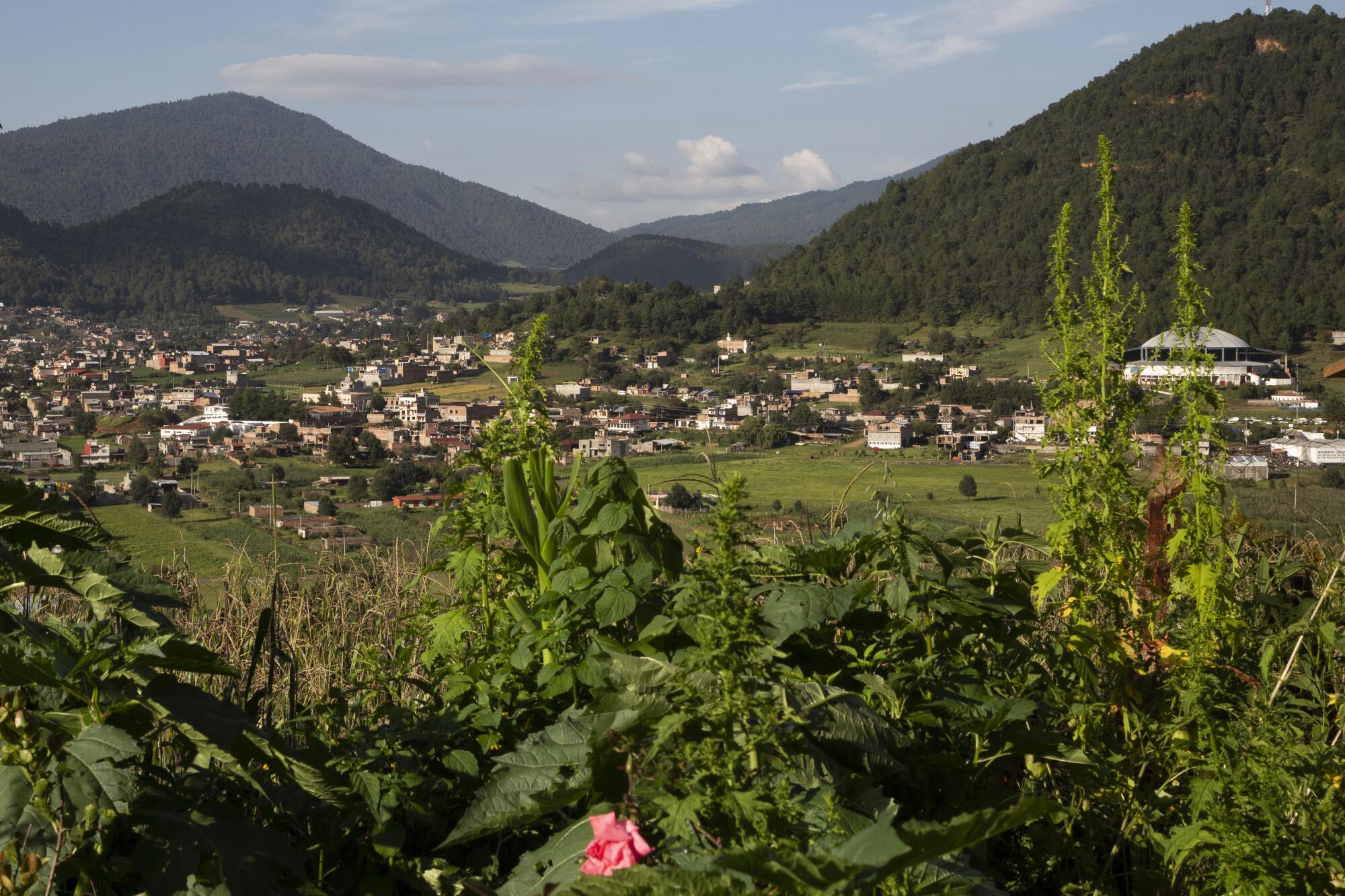
Gathered around the fogatas, men, women and children took turns preparing meals while formulating a provisional council and security force to guard the forest, armed with weapons left behind by the state police.
“The movement was a kind of mirror that allowed us to get to know our roots,” says José Trinidad Ramirez Tapia, 66, a member of the first town council, elected seven months after the movement began, and of the provisional committee that guided the community through the intervening period. “It was at the fogatas that we got to know ourselves.”
Meals began with whatever arrived in the relief packages sent from relatives in the U.S. and sympathizers across Mexico but soon became opportunities for the older women who had led the revolution to pass down recipes while sharing their memories of how the town worked before the arrival of state police sometime in the 1970s.
They taught their neighbors to grind onions and guajillo chiles into thick, warming stews called atapakuas and young men to make tortillas by hand, a task historically seen as women’s work. The movement represented a return to certain traditions but, led by women and young people, also meant clearing space for new voices and attitudes. For Rosa Huaroco, 26, who has spent the last four years researching and recording her community’s culinary and oral traditions, “The fogatas were an important point of transmission.”
Throughout the first year of the movement, Huaroco came home every weekend from Morelia, where she’d moved for university.
“When I went to study, I assumed I would leave and not come back. Really ugly things were happening,” she says.
But the fogatas and the optimism they inspired proved a powerful draw, a place to learn recipes and taste ingredients that, in some cases, she hadn’t seen since her early childhood in her grandmother’s kitchen.
“It went beyond just traditional cooking to the relationship we have with our territory,” she says, which is to say to the core of the movement itself. Since then, “There’s a lot more valorization of our identity, which is something we’d lost.”
Centuries of oppressive policies, first by the Spanish and later by the modern Mexican state, had left many Purhépecha communities ashamed of their ancient culture, the only Mesoamerican civilization south of the northern deserts to have resisted the imperial Aztecs. Smaller communities maintained their mother tongue, but in Cherán, a municipal seat and commercial hub for the surrounding villages, the language faded.
“People would be humiliated for speaking Tarasco when they left town,” says Josefina Estrada Velazquez, 64, one of the 15 women who led the April 15 insurgency. “They didn’t want to be Purhépecha.” Some people from smaller towns where Purhépecha remains the first language remember coming to Cherán for secondary school and being mocked for using the language at all.
It went beyond just traditional cooking to the relationship we have with our territory. ... There’s a lot more valorization of our identity, which is something we’d lost.
— Rosa Huaroco
Thousands migrated from Cherán to bigger cities or to the United States — according to some estimates, there are as many Cherán natives in the U.S. as in Cherán itself — but few maintained close ties to Cherán’s traditions. They did come back with aspirational, “modern” foods including hamburgers and fries. The time-consuming work of traditional cooking and ingredients foraged from the wild were denigrated as relics from an impoverished past.
“People were really ashamed to sell things like mushrooms and wild greens in the market because that was work for poor people,” Campanur says. But in the rainy months that followed the movement, with money and supplies running low, groups of men started joining the forest guard to search the woods for edible fungi. Mushrooms became a fixture at the fogatas.
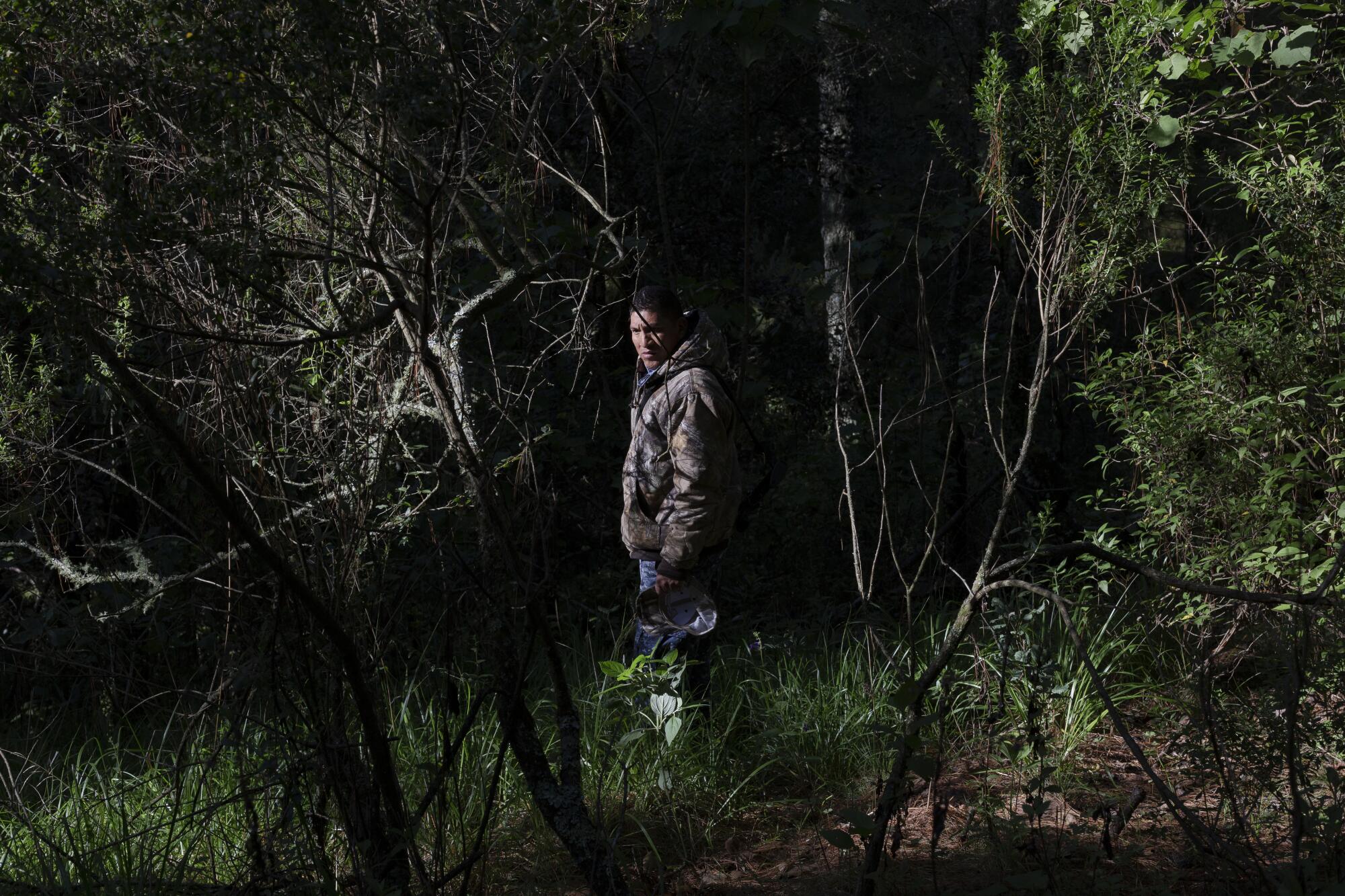
Campanur, who volunteered as a guard for the first year of the movement, remembers those months as a time of danger — according to government data, Cherán saw 14 homicides in 2012 — but also of abundance. A formerly rare variety of mushroom whose spores lie dormant in pine trunks burst from the felled stumps that the rapamontes left behind in their sudden retreat.
“After the movement, there wasn’t a single house that didn’t eat mushrooms: That’s what helped us to recover in those difficult years. It’s how we sustained ourselves,” says Imelda Campos, 65, better known as Doña Mela and widely considered the finest traditional cook in town. “Cherán was always a big town with a strong heart. Our food is our strength.”
::
Since the uprising, those words — “Our Strength,” rendered in Purhépecha as Juchari Uinapikua — have appeared all over Cherán, emblazoned across the indigenous flag that flies in the town hall and on patches stitched to the uniforms of the community police who still make daily patrols of the forest. The central plaza fills day and night with families who come to shop and eat and older men and women enjoying the freedom of a public space untainted by fear. Neighboring villages, some only a few miles away, turn to ghost towns when the sun goes down, just as Cherán once did.
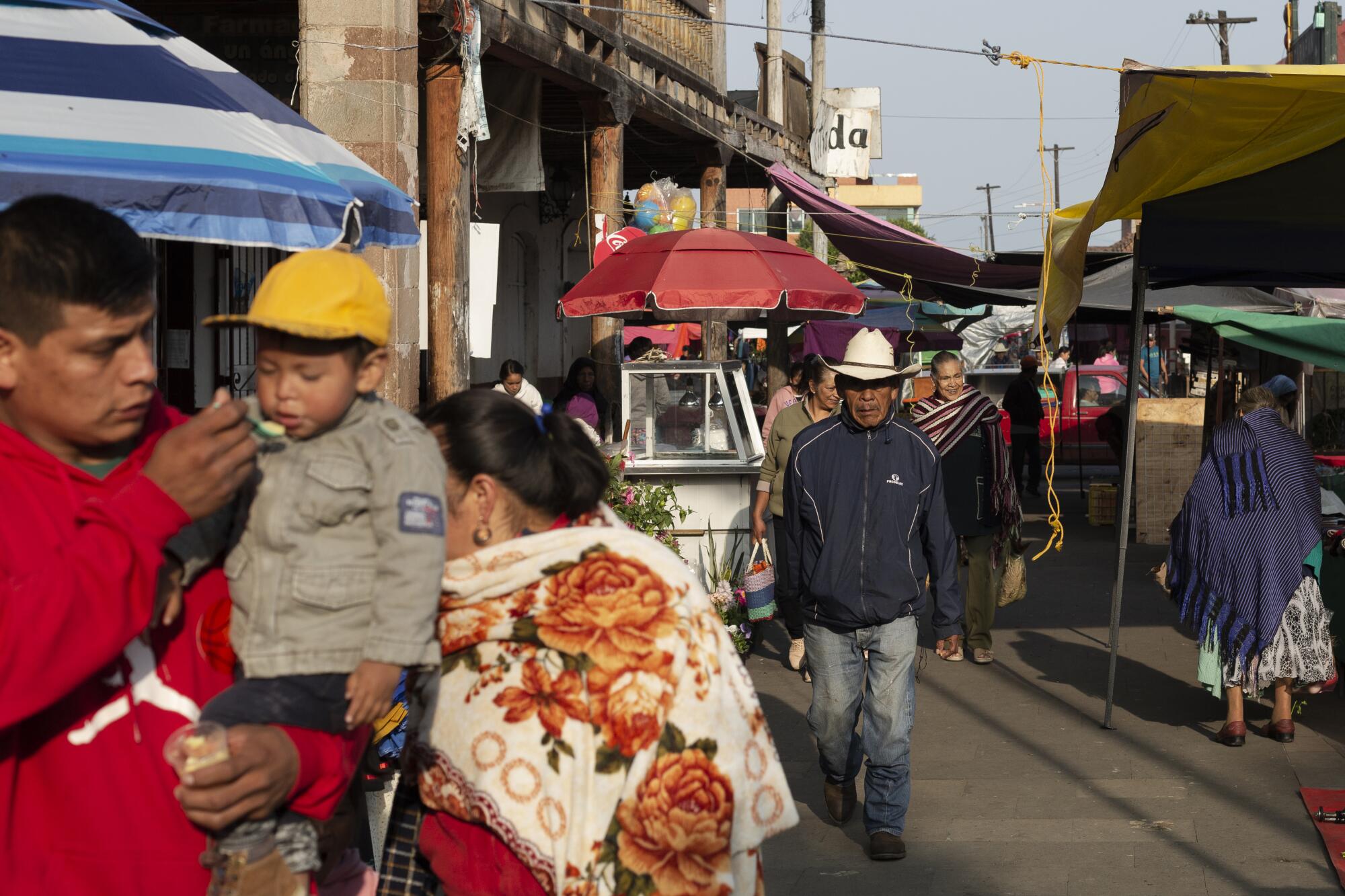
Cherán was not the first town in Michoacán, much less in Mexico, to agitate for a degree of political autonomy, yet its success and its circumstances are unique. Few entirely indigenous communities are so large or have so much support from relatives elsewhere, and few have managed to transform their communities so dramatically without creating a power vacuum for other forms of corruption and violence.
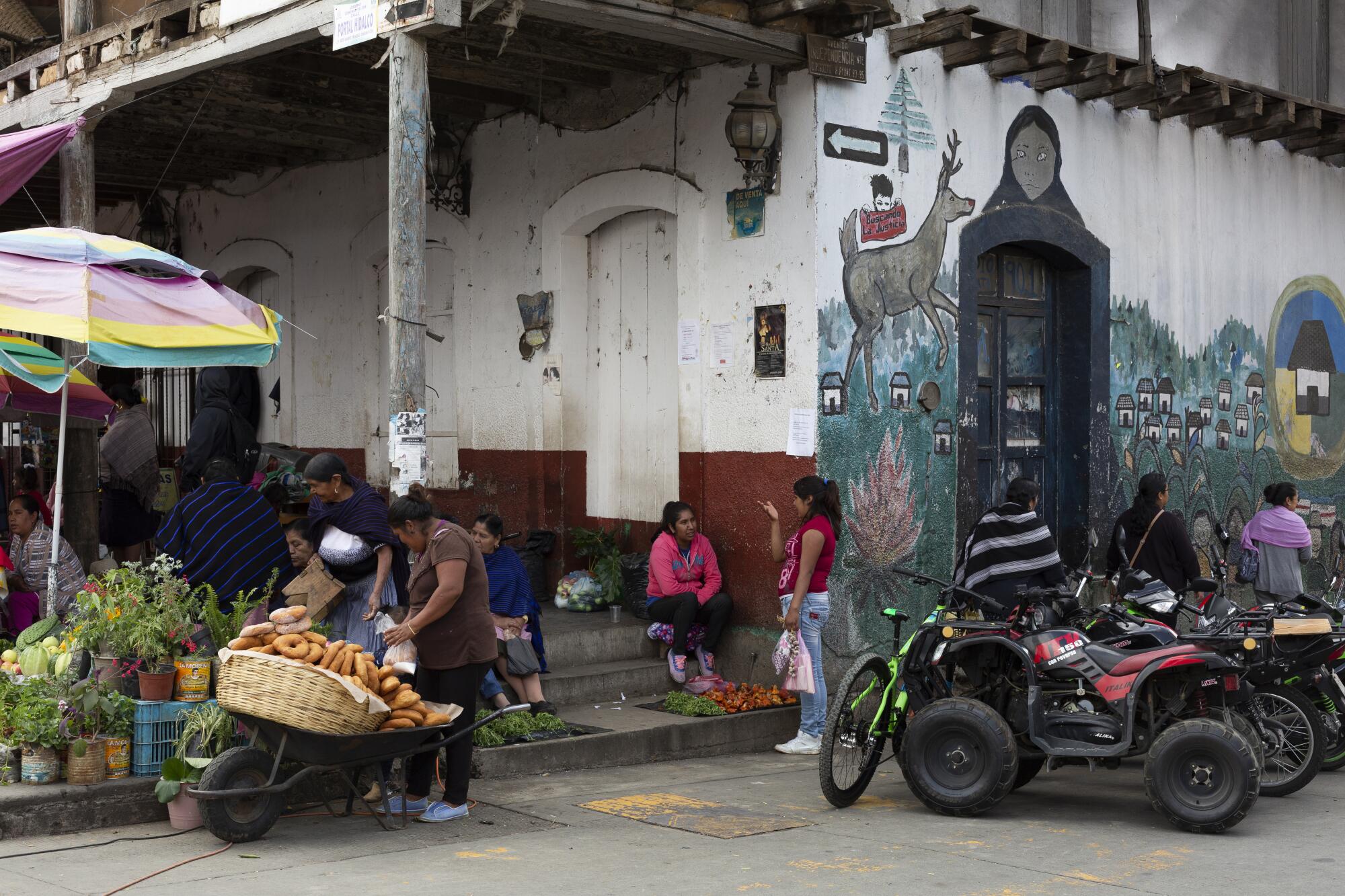
The recuperation of Cherán’s traditions remains, of course, incomplete. Huaroco is one of a group of young people working to revitalize the town’s indigenous culture, interested “in returning to our origins and understanding them in a contemporary context.” Yet many of her peers, she says, would still prefer to eat a crepe or a burger than spend hours tending an open fire or grinding pumpkin seeds for fragrant, nutty pots of pipián brightened with the green flash of wild sorrel — the dish that Doña Mela describes as “the oldest atapakua.”
Yet children born after the movement, Huaroco points out, will grow up having never known political parties and shopping in markets where mushrooms are called by their Purhépecha names. Signs posted around the town hall offer quick lists of Purhépecha words and fliers outside advertise immersion courses, some of them taught by Doña Mela, who uses cooking as a vector for teaching language. “Today,” says Trinidad, “we’re Purhépecha by choice.”
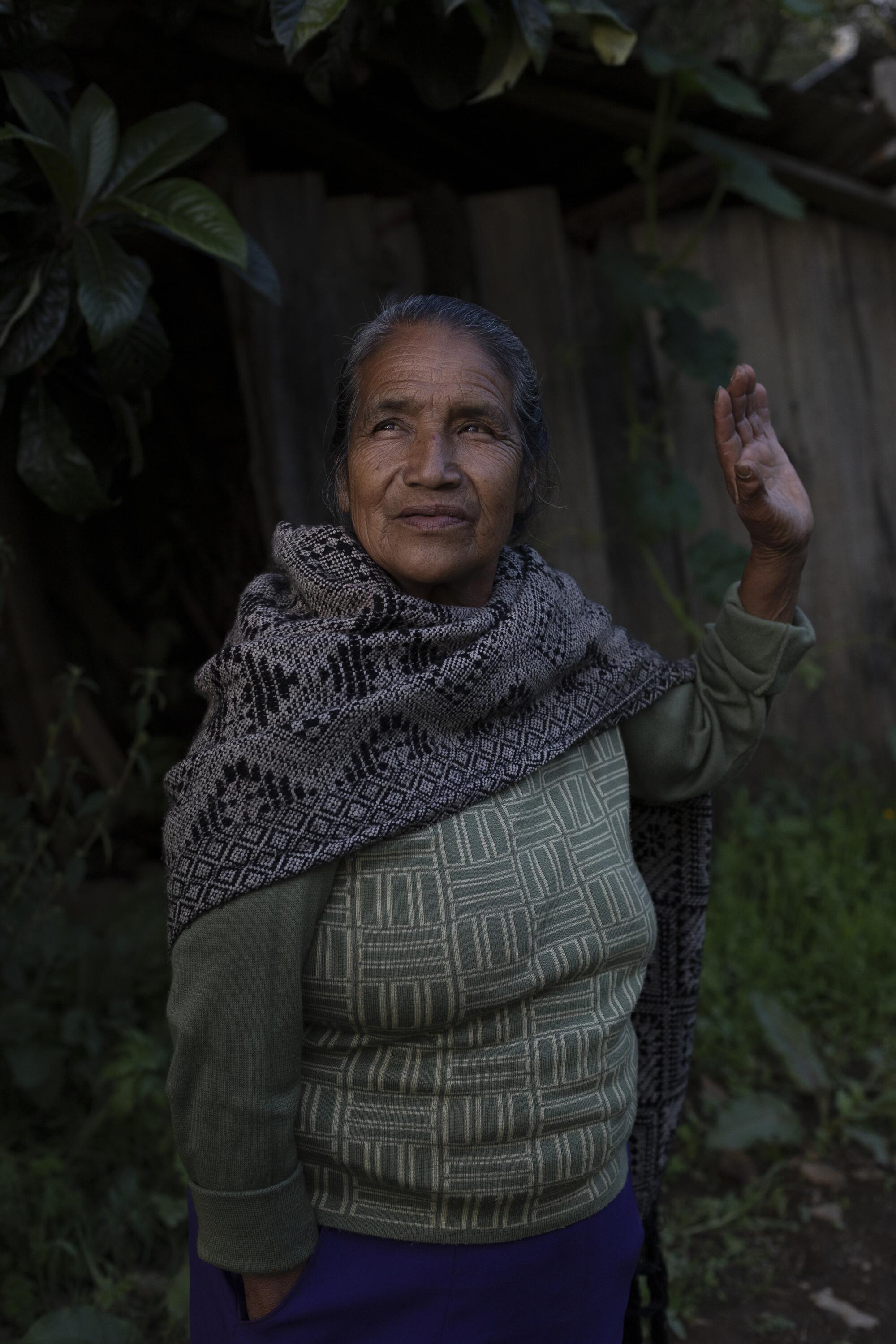
Culture, as Huaroco pointed out, is not static, and neither, says Trinidad, is government. Cherán has no constitution and each of its three administrations has added new councils to better adapt to changing circumstances.
“Our system is never complete,” Huaroco says. “And nothing else will be if we don’t keep developing our love for our community — and food is a part of that.” To do that work, Trinidad hopes to revive the fogatas along with the meals and discussions they inspired.
As of now, there is only one fogata still burning in Cherán, lit by a group of 10 women every Thursday and Sunday night, and known, half-jokingly, as la inmortal (the immortal).
On a recent Sunday, well after sundown, Mary García Romero, the youngest of the group, drags an enameled spoon through a tangle of bird’s feet mushrooms wilting slowly into a thick red atapakua. A column of steam and smoke, redolent of sweet soil and wood and a bracing gust of yerba buena, collide with the soot-blacked tin roof erected nearly a decade ago.
As the night wears on, the women share recipes and compare notes on ongoing problems in the community. Up the street, a young man shouts drunken expletives into the darkness. Rosa Fabian Romero, seated on a log laid out across the uneven pavement, turns up the radio, tuned to the frequency of the community station, called Radio Fogata, to drown him out, while Angeles Tomás Sánchez calls the ronda to take him home.
“We should have used more guajillos to give the atapakua a nicer color,” Doña Rosa says, eyeing the burbling pot critically. She adds imperiously, without so much as a taste, “And it needs more salt.”
Cherán is safe now. Young women go jogging in the forests alone. Neighbors look out for one another. The forest guards, Campanur complained good-humoredly, barely train anymore. Whole families go to the hills to hunt mushrooms, a delicacy brought back from the brink. Yet these women continue their vigil. “We come to the fogata because there are still a lot of things we haven’t quite solved yet,” Doña Angeles says.
Mary García drizzles a stream of red liquid onto her palm, licks it away and throws another handful of salt into the pot. She nods in agreement. “Things can always be better.”
More to Read
Eat your way across L.A.
Get our weekly Tasting Notes newsletter for reviews, news and more.
You may occasionally receive promotional content from the Los Angeles Times.
